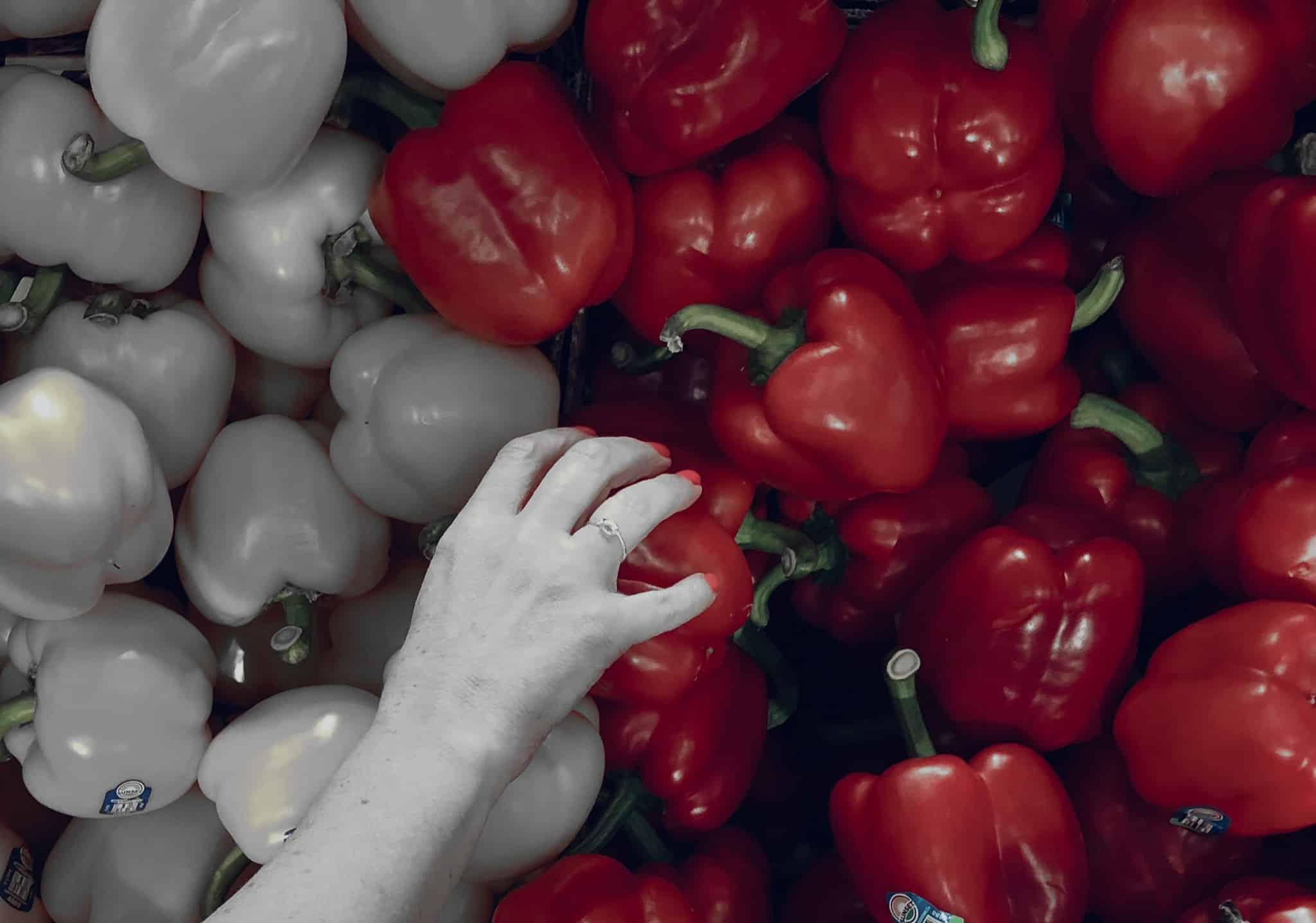Until the end of the last decade, eGrocery was still a category with minimal growth. Then the pandemic thrust the service to the forefront of people’s needs as social distancing norms made it hard to shop groceries offline. In the wake, quick commerce also gained prominence as platforms offered reliable service and buyers preferred the convenience. While it remains one of the fastest growing eTailing categories, eGroceries still has plenty of headroom for growth.
Let’s have a quick look at the status of eGrocery in Metros, Tier 1+ and Tier 2+ cities, and the opportunity for delivery players.
1. eGrocery is amongst the fastest growing eTailing categories at an annual and quarterly level
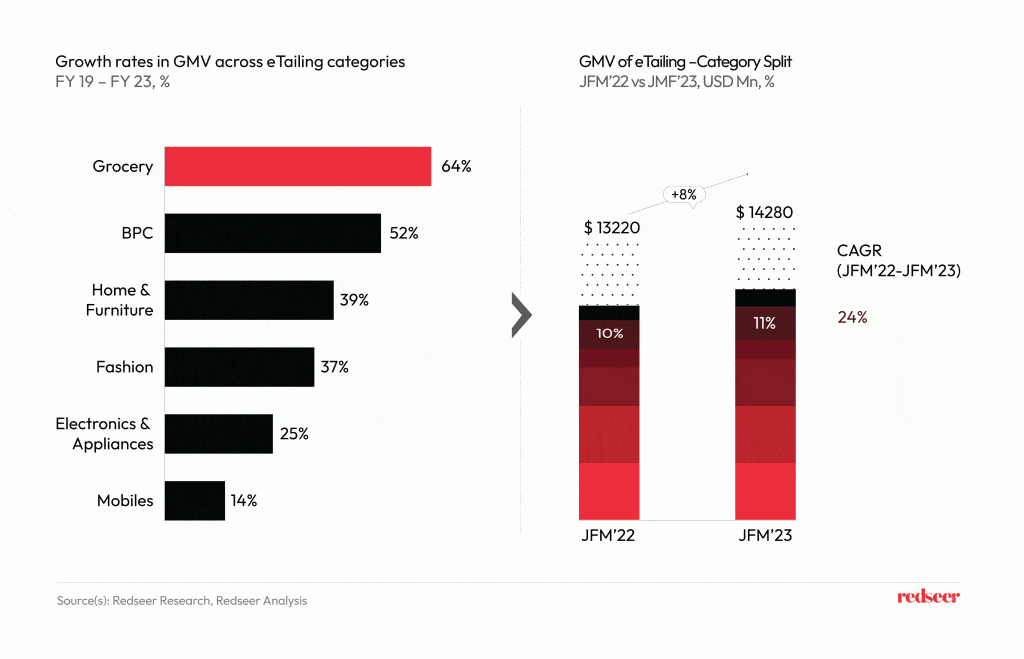
Looking closely at the CAGR in GMV across eTailing categories, eGrocery had the highest growth rate at 64% since FY19. COVID acted as a catalyst in boosting the adoption of eGrocery in major cities with stricter lockdown protocols. Eventually, as more consumers got accustomed to the convenience of having essentials delivered at their doorstep, eGrocery maintained its demand and growth both at the annual and quarterly level.
2. Quick Commerce continues to grow fast in Metro and Tier 1 cities, while slotted delivery platforms expand foray in Tier 2+ markets
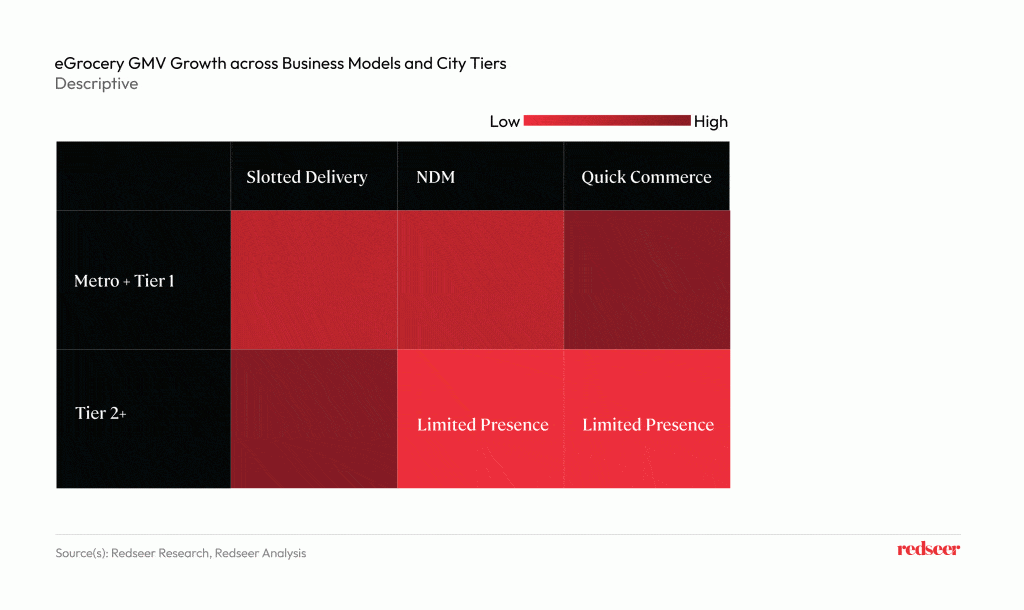
Quick commerce services have become the favourite for Metro and Tier 1+ users owing to its fast services across mature markets. While existing consumers in these cities have developed the habit of having their essential groceries delivered in no time, more first-time users are taking to quick commerce because of the convenience.
Slotted delivery began as the norm for eGrocery in Metro and Tier 1 cities. The same story is now unfolding in Tier 2+ cities as slotted delivery has been growing rapidly with more players foraying into the Tier 2+ markets.
3. However, there are significant gaps in Quick Commerce offerings
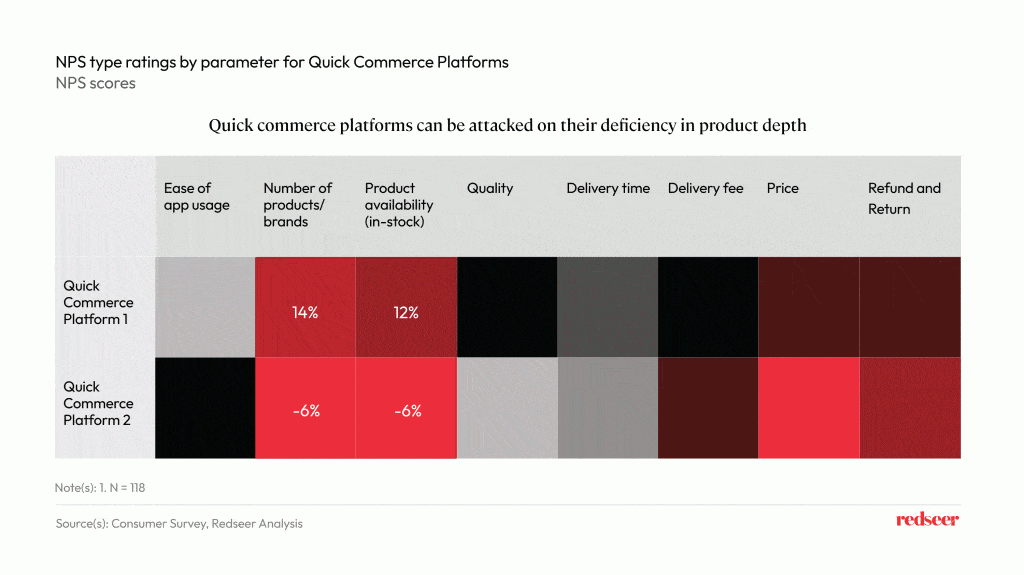
Although quick commerce is growing rapidly in Metro and Tier 1+ cities, it still has significant gaps in terms of the range of products and brands being offered by most platforms. Product selection and availability is a challenge that platforms need to solve for to improve consumer satisfaction. This deficiency in product depth is where quick commerce platforms can be attacked to encourage wider adoption rates among new users.
4. The userbase of eGrocery has been small
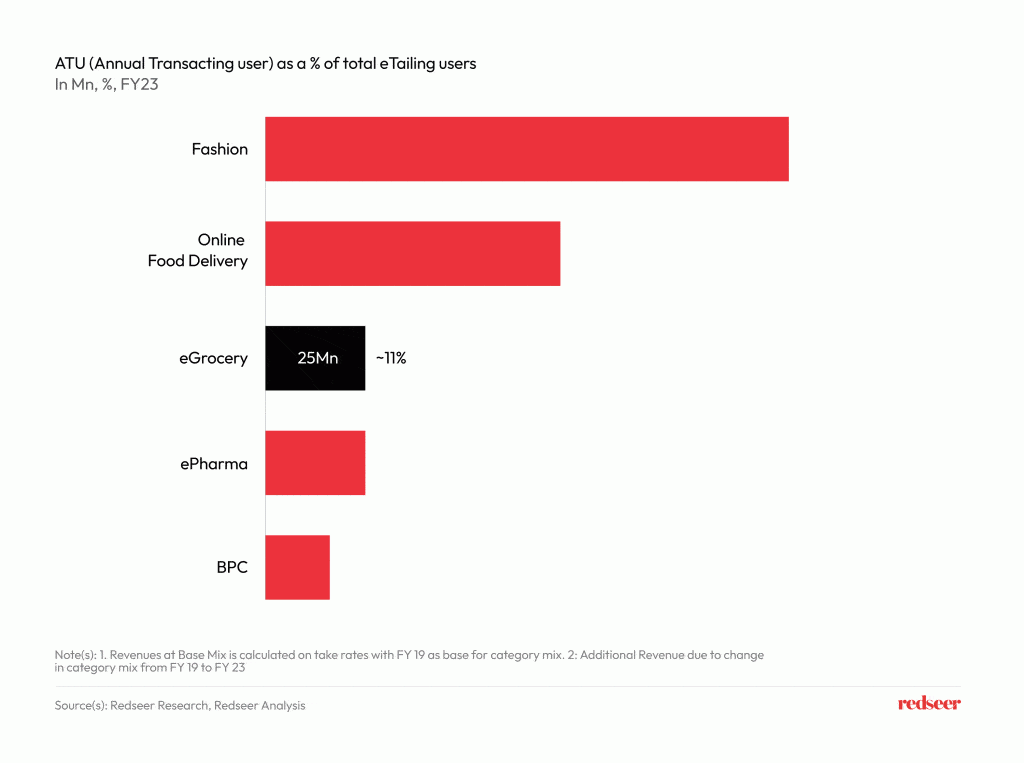
Despite being one of the fastest growing eTailing categories, eGrocery still ranks low in terms of the transacting userbase. Of the total number of eTailing users in India, only about 11%, or 25 million people were annual transacting users of eGrocery as of FY23. This leaves a significant opportunity for platforms to unlock by closing existing gaps in product depth and solving challenges associated with converting offline shoppers.
5. Key challenges of converting offline shoppers are their high rigidity in sticking to offline channels and concerns on quality
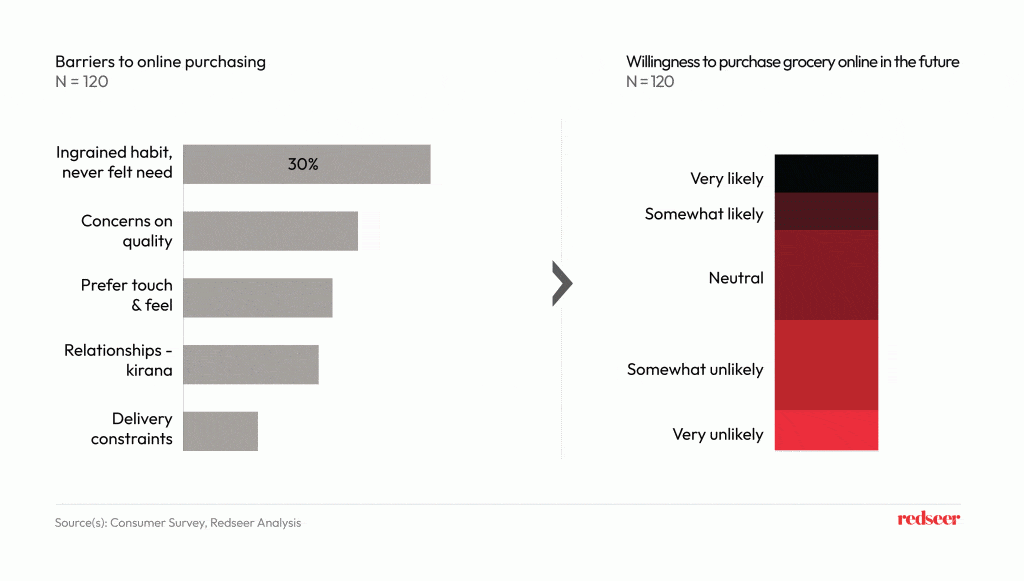
Approximately 80% of offline buyers are satisfied with their grocery shopping options available in their local area. For many, buying from their local Kirana stores is an ingrained habit they don’t see the need to change. Moreover these offline buyers prefer the touch and feel of the products being purchased to feel assured about the quality—an experience that’s not available when shopping online. Various delivery constraints on the last mile also add to the reluctance of offline shoppers converting to eGrocery.
Finally, eGrocery players have an opportunity to acquire new users as ~40% of the non-eGrocery users are not even aware of online grocery options available in their area. Solving the key challenges associated with this cohort also presents an opportunity to convert those who are on the fence about shopping groceries online.

